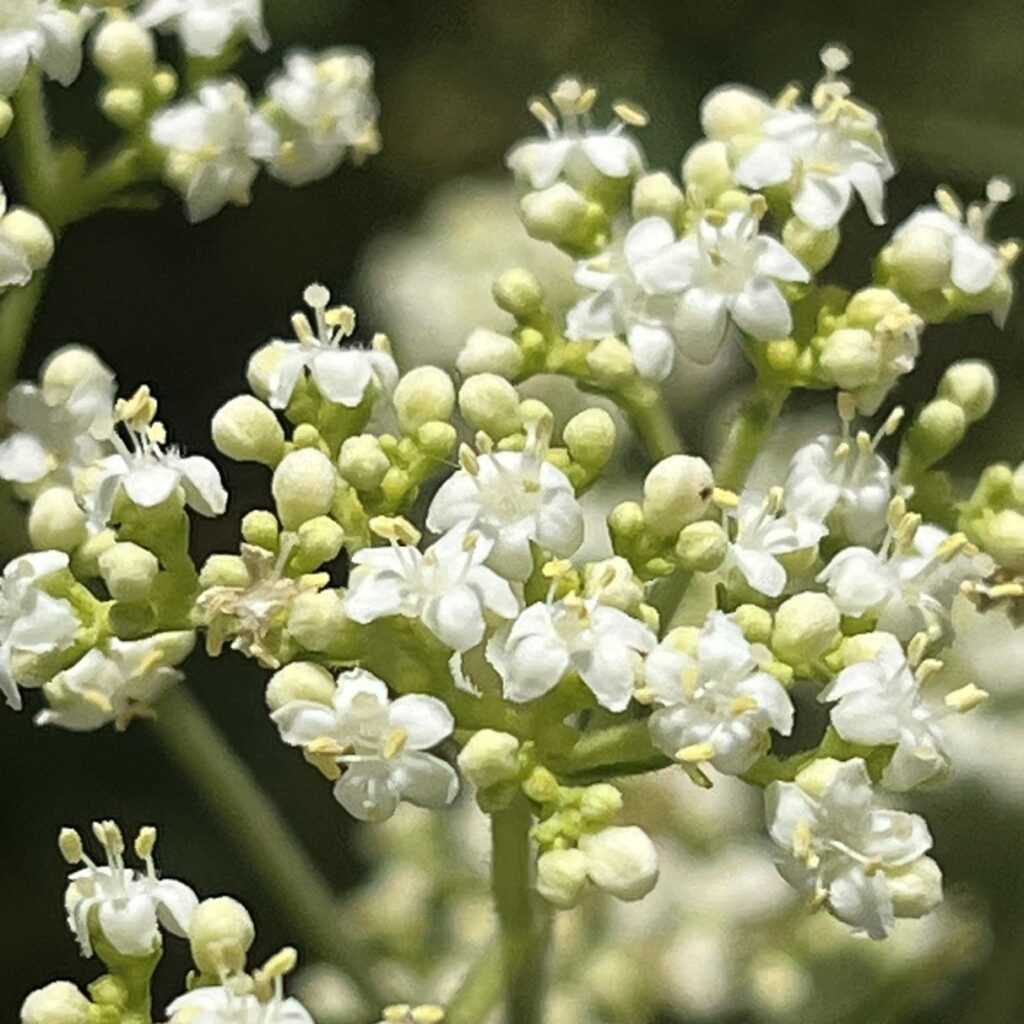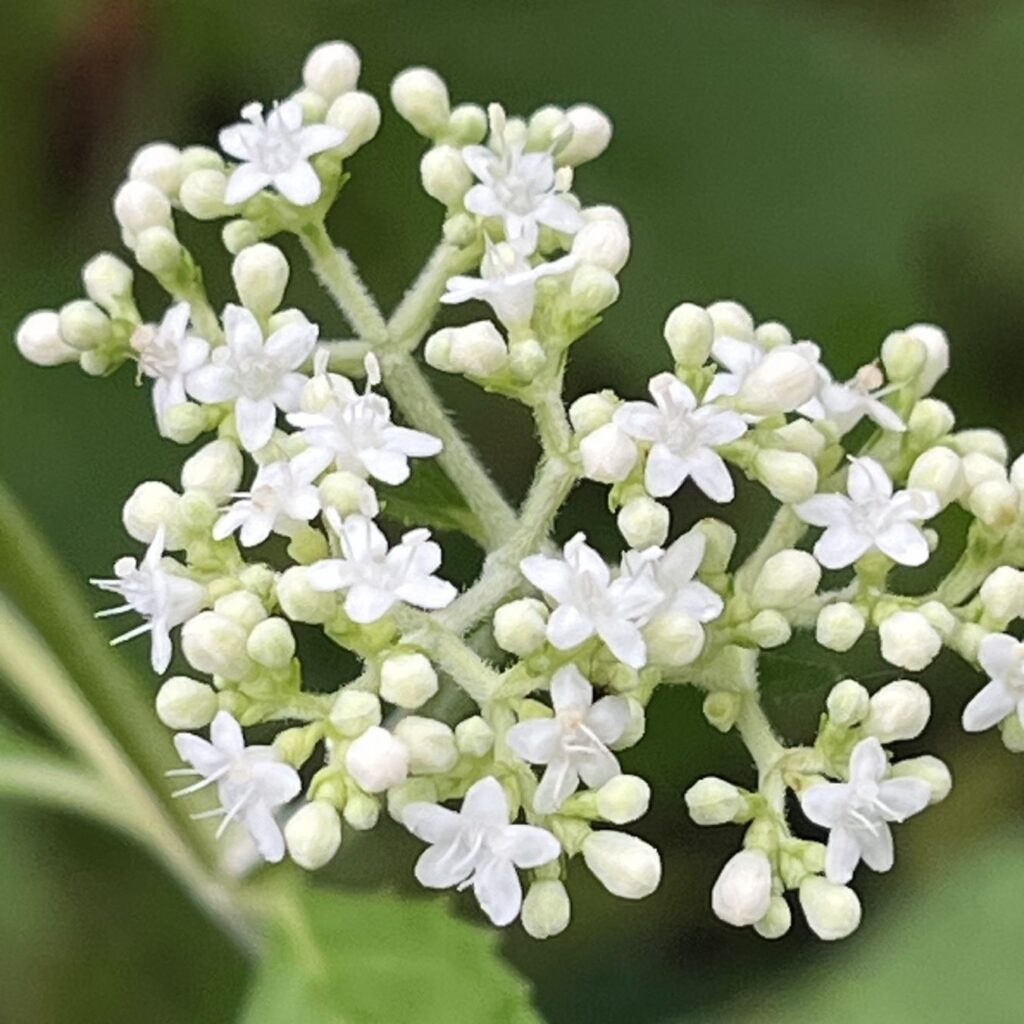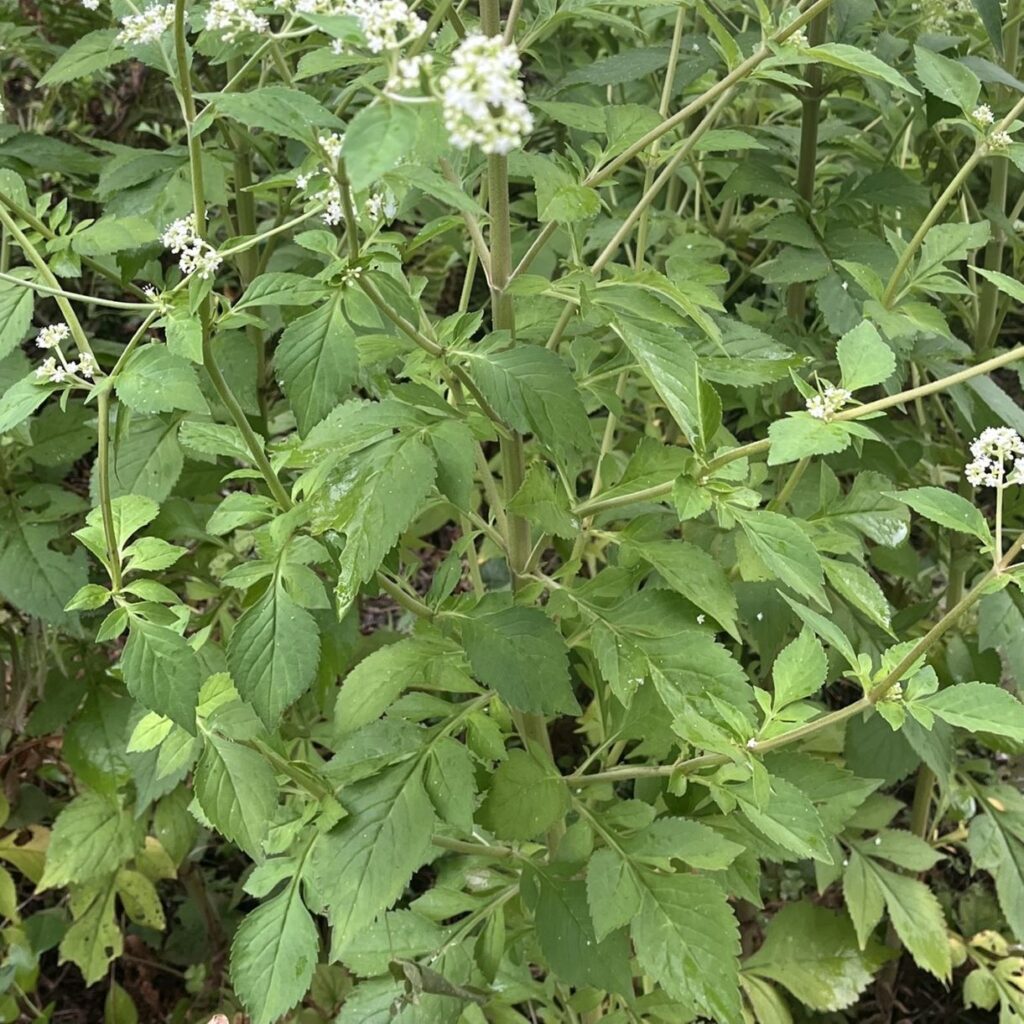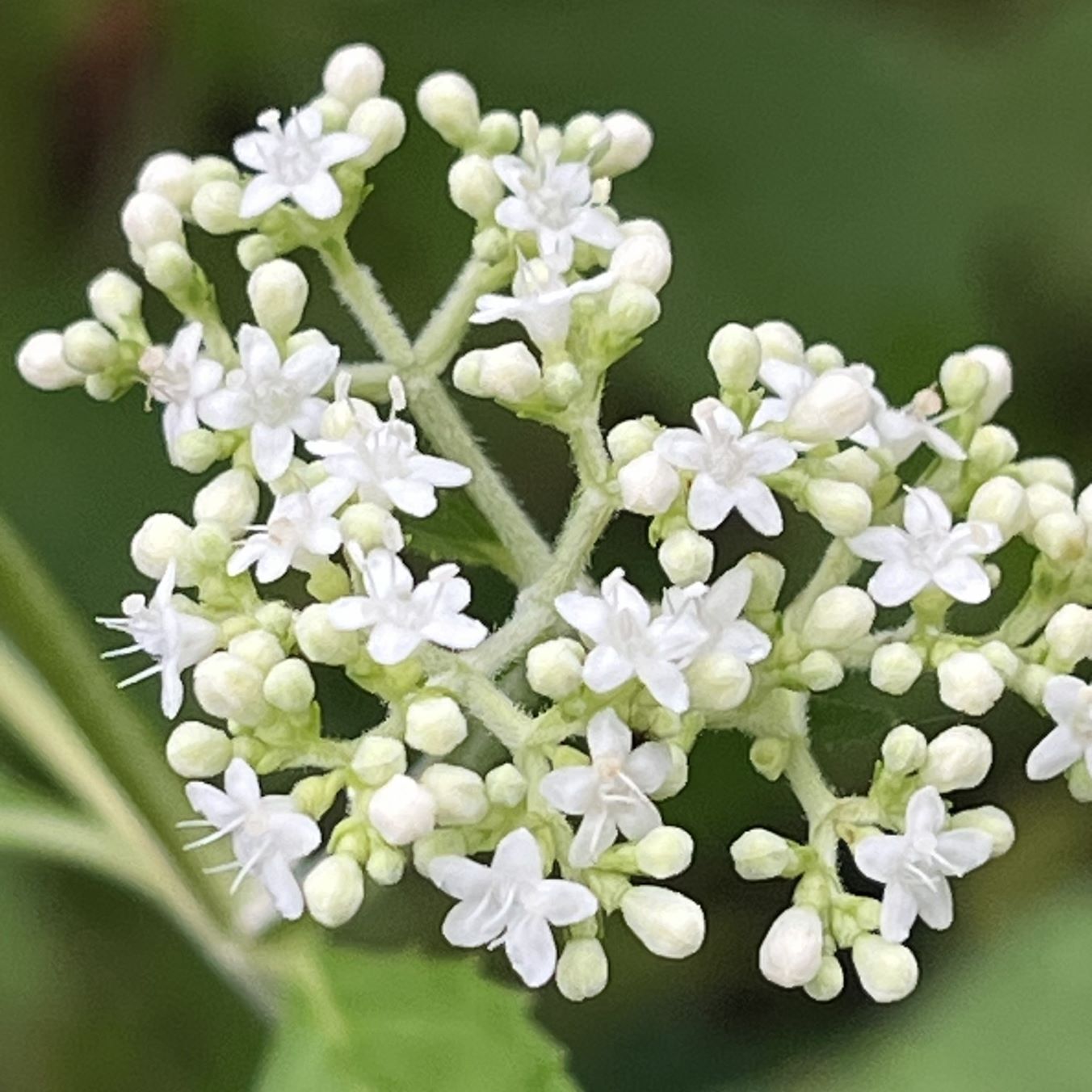オトコエシの花は白色で小さく、花被が5裂、雄しべが4本。昔から身近な野草として親しまれ、生薬として解熱や解毒にも用いられました。
White Patrinia has small white flowers, five-lobed perianth, and four stamens. It has been familiar as a wild plant since ancient times. It was also used as a herbal medicine to reduce fever and detoxify.
【仮名】オトコエシ
【和名】男郎花
【英名】White Patrinia
【学名】Patrinia villosa
【誕生】10/ 03
【開花】08, 09, 10月
【花色】White
オトコエシ
オトコエシの概要

オトコエシはスイカズラ科の多年草です。日本では北海道から九州まで、国外では朝鮮半島から中国、台湾まで分布し、日当たりのよい山野に群生。近縁の女郎花とともに昔から身近な野草として親しまれ、「敗醤草」「敗醤根」という生薬として解熱や解毒などにも用いられました。
オトコエシの名前

オトコエシの名前の由来は「男敗醤」「男飯」の転訛です。敗醤は「腐敗した醤油」という意味で花後の悪臭に由来。飯は小花を白飯に見立てたものです。ラテン語の属名パトリニアはフランスの鉱物学者ユージン・パトランへの献名。種小名ビロサは「軟毛のある」という意味です。
オトコエシの姿形

オトコエシは全体が白色の粗毛に覆われます。茎は下方で直立、上方で分岐。葉は下方が羽状の深裂、上方が楕円形で対生し、縁に鋸歯が入ります。花は白色で小さく、花被が5裂、雄しべが4本。茎先に集まって咲きます。花後の痩果は翼がある卵形。走出枝で新たな株を作ります。
オトコエシの近縁

オトコエシの近縁種「女郎花」は、男郎花より茎が細く、葉が小さく、佇まいが嫋やか。名前の由来は同様に「女敗醤」や「女飯」の転訛です。敗醤は花後の悪臭に由来し、飯は黄色の小花の集まりを粟飯に見立てたもの。粗毛が少なく、痩果に翼がなく、根茎で新たな株を作ります。
White Patrinia

White Patrinia is a perennial plant of the Caprifoliaceae family. It is distributed in Japan from Hokkaido to Kyushu, and overseas from the Korean Peninsula to China and Taiwan, and grows in clusters in sunny mountains and fields. Along with its closely related species, Golden Lace, it has been familiar as a wild plant since ancient times. It was also used as a herbal medicine to reduce fever and detoxify.
The Japanese name White Patrinia comes from “rotten soy sauce” or “rice.” This is because it produces a foul odor after flowering and the white florets look like rice. The Latin genus name Patrinia is a tribute to the French mineralogist Eugene Patrin. The specific name villosa means “having soft hairs.”
White Patrinia is covered entirely with white coarse hairs. The stem is erect at the bottom and branches at the top. The lower leaves are deeply pinnately lobed, while the upper leaves are elliptical and opposite, with sawtoothed edges. The flowers are small and white, with five lobes in the perianth and four stamens. They bloom in clusters at the end of the stem. The achenes that grow after the flowers are winged and oval. New plants are produced by stolons.
“Golden Lace”, a close relative of White Patrinia, has thinner stems, smaller leaves, and a more graceful appearance than White Patrinia. The Japanese name is also derived from “rotten soy sauce” or “rice”. This is because the yellow florets look like millet rice. There are few coarse hairs, the achenes have no wings, and new plants are produced by rhizomes.



